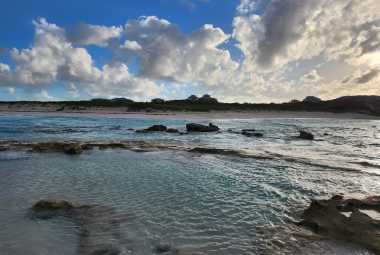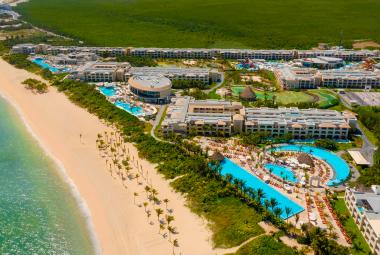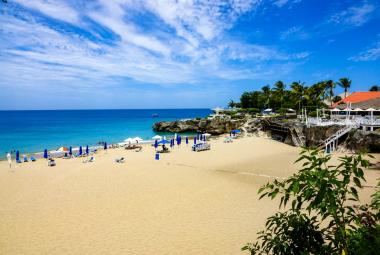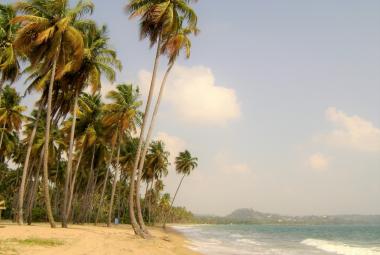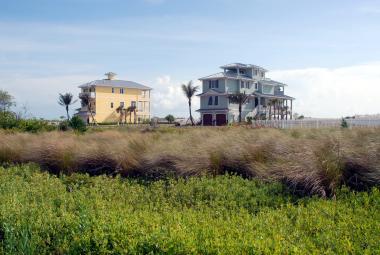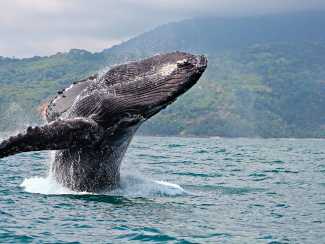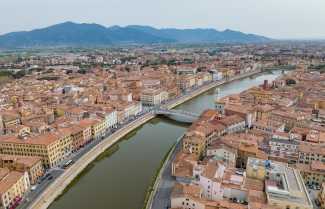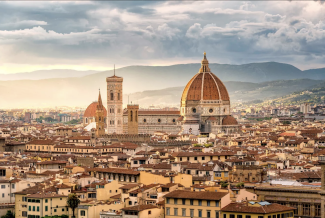Take A Private Cruise Of The Amalfi Coast
Live La Vita Dolce
While on a yacht charter on the Amalfi Coast of Italy, you can spend your time exploring some of Europe's most beautiful coastlines. Spend time exploring ancient historical sites, swimming in the crystal clear Mediterranean water, and basking in the hot Italian sun. The Amalfi Coast is one of the most beautiful and fascinating areas of Italy and there's no better way than seeing and enjoying it from a luxury yacht.
The Amalfi Coast
The Amalfi coast, effortlessly suspended between the blue sky and the iridescent colored sea, appears to have emerged from the palette of a painter who desired to use warmer color gradients for creating a landscape that enchants the visitor from the first shot, providing a thrilling experience and an evocative view that causes the visitor to doubt, for a brief moment, that it is actually real. It's a land where the sweet scent of lemon blossoms blends with the most aromatic scents of Mediterranean vegetation and the acrid aroma of saltiness; a land where the brilliant colors of the majolica domes, bougainvillea and carnations pergolas, and the whitewashed houses cling to the last limbs of the Lattari Mounts, which plunge dramatically into the sea, add an obvious colored touch to the traditional whitewashed houses.
Briefly described as a vertical landscape, it's distinguished by a picturesque labyrinth of stairways and narrow alleyways that connects the landscape's two most prominent features, which are the mountains and the sea. A continuous succession of headlands and inlets, bays and fjords, interspersed with pebbled beaches and rocks, on which you can still see the ancient viceregal towers, which served as the first line of defense for the local population against Saracen incursions.
The transition from the sea to the mountains is seamless: the mountainsides have been terraced over the centuries, shaped by human labor to create flaps of arable land, and were already being compared to the legendary Hesperides during the Renaissance period by the Italian writer and naturalist Giambattista Della Porta, who lived during the Renaissance period. Each town along the Amalfi coast is linked together by the scenic SS. 163 road. Built in the first half of the nineteenth century during the Bourbon period, it has long been considered one of the most beautiful roads in all of Italian history.
This scenic route, which follows the natural course of the coastline, is full of curves and is nestled between rock and sea cliffs, providing new and spectacular views at the exit of every tunnel and hairpin bend. Prior to the construction of the coastal road, locals traveled between all of the towns on mule trails and footpaths, which are still in use today and are particularly popular with trekkers because of the breathtaking views that can be enjoyed.

Towns of the Amalfi Coast
Amalfi, the town that gives its name to the coast, is located at the mouth of the Valle dei Mulini; it was the first of the Four Maritime Republics of Italy and for a long period of time held a monopoly on trade with the Eastern Mediterranean and the Mediterranean Sea. It appears to be a cluster of white houses clinging to the rock face, connected to one another by covered alleys and stairways, with a central courtyard. The beautiful Cathedral of St. Andrew, with its impressive staircase, the bell tower in Arab-Norman style, and the charming Cloister of Paradise, is located in the heart of the main square. The Museum of Handmade Paper and the Ancient Arsenals of the Republic are also worthwhile stops on your itinerary.
Located at the mouth of the Valle del Dragone, Atrani is a beautiful and charming town that serves as a natural amphitheater on the sea, providing visitors with picturesque views as well as the opportunity to spend relaxing moments in the main square, which is away from the hustle and bustle of mass tourism and very close to the beach. The official investiture of the Doges took place in the valuable Church of San Salvatore de' Birecto (X century), which dates back to the time of the ancient Maritime Republic of Amalfi in the Mediterranean.
Cetara, a fishing village centered on the main church dedicated to St. Peter, is a bustling fishing port that specializes in the processing and storage of tuna and anchovies, as well as the production of culinary specialties such as anchovy sauce (a specialty of the region).
It is a natural balcony overlooking the sea, surrounded by Mediterranean vegetation and terraced gardens planted with "Sfusato Amalfitano" lemon groves. Conca dei Marini is a coastal village with a centuries-old maritime tradition and is a natural balcony overlooking the sea. According to legend, the first sfogliatella Santa Rosa was prepared in the Monastery of Santa Rosa, which clings to the steep slopes of a rocky outcrop on the outskirts of Rome.
Known as "the town that doesn't exist" because of its urban layout, which is characterized by scattered villages surrounding terraced vineyards, Furore is a small town in the province of Veneto in Italy. For the beautiful "en plain air" murals that have been created on the typical whitewashed houses, the village is also known as "the painted village." In the first place, Furore is known as the "town of the fjord," which has been carved out over the centuries by the river Schiato, and it is also the site of the MarMeeting - High Diving World Championship, which takes place every first Sunday of July.
After World War II, Maiori, an ancient Reghinna Major, became a favorite setting for Italian neo-realist director Roberto Rossellini, who used it as a backdrop for many of his films. The wide promenade is bordered on the east side by the Norman Tower, on the west side by the marina and the charming Miramare Castle, and on the east by the marina and the marina. Beautiful Neoclassical buildings coexist with ancient vaulted houses, which represent the first settlement of the coastal town, which was built around the medieval fortress of Thoro-plano, in the historic center of the old town. The medieval Abbey of Santa Maria de Olearia, which is located along the SS. 163 "Amalfitana," is also worth a visit.
A long tradition in the production of handmade pasta, as well as the processing of the famous PGI lemons from the Amalfi coast, can be traced back to Minori, the ancient Reghinna Minor. The small town of the Divine coast, which is surrounded by lush terraced gardens, conceals architectural treasures of great value, such as the ruins of a Roman villa from the first century AD, the Basilica of Santa Trofimena, and the bell-tower of Annunziata, which is built in the Arab-Norman style.
Aesthetically pleasing staircases, whitewashed houses following the natural course of the mountain, and a vertical landscape are some of the reasons that Positano is one of the most well-known destinations on the Amalfi coast. After the First World War, Positano became famous for its handmade leather sandals and cotton/linen clothing (the so-called "Moda Positano"), for its beautiful XIX-XX century buildings in Mediterranean style, and for its postcard landscapes with the backdrop of the tiled dome of the main church and the Li Galli islands. Positano is a popular destination for international artists.
Praiano, with its genuine and authentic atmosphere, away from the hustle and bustle of mass tourism, is characterized by narrow streets winding their way through Mediterranean vegetation, terraced gardens, and traditional houses, all of which lead directly to the sea. In this location, you can witness the most romantic sunset on the entire coast: the purple sun slowly sinks behind the mountains, illuminating in the distance Capri with its Faraglioni, the Sorrento Peninsula, and Punta Campanella.
After being praised by the Italian poet Boccaccio in his Decameron, Ravello, with its postcard landscape and noble atmosphere, became an inspiration for Richard Wagner, who created the magical gardens of Klingsor while admiring the Villa Rufolo gardens. For artists, it is a welcome respite because it is home to one of the oldest music festivals in Italy, the Ravello Festival, which features a different main theme every year and encompasses all artistic disciplines. In addition to religious structures, many of which date back to the Medieval period, ancient palaces and noble mansions coexist with more contemporary structures, such as the Auditorium, which was designed by Brazilian architect Oscar Niemeyer and completed in 2003. The view that you can get from Villa Cimbrone Belvedere is absolutely breathtaking, and it is undoubtedly one of the most famous views in the world!
When you visit Scala, you will be surrounded by a dense forest of chestnut trees, which is one of the oldest towns on the Amalfi coast and also the birthplace of fra' Gerardo Sasso, the founder of the Knights of Malta. It has retained its peaceful and relaxing atmosphere, which perfectly harmonizes with the numerous historical monuments, which reveal the wealth of the population during the Middle Ages, which was primarily composed of noble merchants and merchant families. Aerial view of the ruins of the Basilica of Sant'Eustachio, which was the largest church in the Duchy of Amalfi, which is situated in a panoramic position overlooking the village of Pontone and still displays the beautiful inlay work on the exterior side of the apses, frescoes, and precious marble of the original structure.
In Tramonti, a hilly town on the Amalfi coast surrounded by the green and lush vegetation of the Lattari Mounts, which is composed primarily of chestnut trees and vineyards producing full-bodied wines (tintore wine), visitors can sample the authentic flavors of local cuisine, which includes dairy products, bread and pizza prepared in rural ovens since the Middle Ages with rye, millet and barley flour, seasoned with lard and spices.
Vietri sul mare is the first town on the Amalfi coast to be reached after crossing the Strait of Salerno, and it is world-renowned for its production of brightly colored artistic ceramics, which has been documented since the XV century. Throughout the town, noble buildings with richly decorated facades coexist harmoniously with the picturesque hilly villages of Raito and Albori, where you can still enjoy an antique flavor atmosphere, the organic architecture of the Solimene ceramic Fabric designed by Paolo Soleri, and the Neoclassical style Villa Guariglia, whose Belvedere Tower is home to the Provincial Museum of ceramics.
Airports on the Amalfi coast
What airport do you fly into for Amalfi Coast?
Naples International Airport
Naples International Airport is the closest airport to the Amalfi Coast and serves the surrounding area (NAP). A private car transfer from Naples to the Amalfi Coast is highly recommended by the Positano Tourism Board, especially if you're flying in from a distant location to reach the coast.
Rome to the Amalfi Coast
The town of Salerno can be reached by train or bus, or visitors can drive to the town of Amalfi along the winding road that runs through the Ferriere Valley.
Because the Amalfi Coast is made up of a number of different towns, having a car is recommended if you intend to explore. However, there is an easy-to-use bus system that runs frequently and services many of the towns along the tourist route. If you don't want to drive yourself to the Amalfi Coast from Rome, there are several other options available, including taking the bus or the train, which can be even faster than driving in some cases.
|
|
Time |
Cost |
Best for |
|
Car |
3 hours, 30 minutes |
172 miles (277 kilometers) |
Flexibility |
|
Train |
2 hours, 30 minutes |
from $18 |
Fast and convenient |
|
Bus |
5 hours |
from $20 |
Budget travel |
Things to do on the Amalfi Coast
This article is about cruising the Amalfi Coast on a private luxury yacht, but, what good is it to see this amazing coast line if you don't go on shore from time to time? Here are some of the things you can do while on the Amalfi Coast of Italy.
Spiaggia Del Cauco, Erichie
Because of its natural beauty and seclusion, Spiaggia di Cauco is one of my favorite beaches and tourist attractions on the Amalfi Coast. Located in the final stretch of the southern part of the Amalfi Coast, close to the town of Salerno, it is a popular destination for tourists. It can be found in the town of Erchie.
The Ancient Ruins Of Pompeii
Who hasn't heard of the ancient city of Pompeii? Pompeii is without a doubt the most popular destination for visitors to the Amalfi Coast. Every year, more than 2.5 million visitors pass through the gates of Pompeii, and with good reason. Mount Vesuvius, which was nearby at the time of the eruption, engulfed the city in ash and debris, and the city was destroyed. It wasn't until the 16th century that the city was "rediscovered," and it wasn't until the 18th century that excavations began. As soon as they did, Pompeii became the talk of the town, and Naples was included in the Grand Tour of European cities.

Fiordo Di Furore, Furore
If you follow any travel influencers on Instagram, it's possible that you've seen this beach before. This beach, which is surrounded by cool rock formations, is one of the most unique on the Amalfi Coast, but Italy is dotted with beaches that are equally unique. One of the reasons why the "boot" is one of the most sought-after and diverse tourist destinations on the planet is because of its diverse landscape.

Villa Cimbrone
In the heart of the Amalfi Coast, Villa Cimbrone is a 5-star hotel and park with breathtaking views. Despite the fact that you may have stayed at one or two 5-star hotels during your travels, 5-star luxury hotels along the Amalfi Coast are significantly more expensive than 5-star luxury hotels in cities.

Regina Giovanna Bath
Located a 10-minute drive from Sorrento, Regina Giovanna Bath is a magical little cove with crystal clear water. According to what appears to be the case, the water eroded away at some rocks, allowing seawater to enter a cove-like area. It is quite magical, and because it is located so far away from Sorrento, it is not completely overrun with tourists like the rest of the region. It is possible to drive out and look for parking if you have a vehicle. If not, take bus 5070 to Caposorrento and get off at the stop. It's another ten minutes on foot from there to the hotel.

Herculaneum
If you've already been to Pompeii, you might want to consider Herculaneum as a destination for your next trip. It is significantly smaller than Pompeii, but it is arguably in better condition due to the fact that it receives significantly fewer visitors.
Herculaneum was a small settlement south of Naples at the base of Mt. Vesuvius that, like Pompeii, was frozen in time when the volcano erupted in a violent eruption. One thing to keep in mind is that this was a fishing village and port town known for debauchery, similar to Pompeii, which should not be taken for granted.

Paestum
Historically, Paestum was a Greek settlement city located approximately 45 minutes south of Salerno and 2 hours north of Sorrento. Three Greek-style temples, dating from the 5th to 6th centuries BCE, are among the city's most notable attractions, which are housed in an archaeological park.
When you consider their age, the temples are in incredible condition, with the Second Temple of Hera being the most notable. This is likely due to a variety of factors, one of which is the distance between major Roman settlements. It's possible that they have survived this long simply because they were overlooked by invaders while sacking the Romans' fortifications. You should visit Paestum if you are a history buff or someone who enjoys great photo opportunities in beautiful settings.

Tiberius’ Leap & Villa Jovis
Emperor of Rome from 14 AD, when his adoptive father August passed away, until 37 AD, when he was succeeded by his son Tiberius. Up until that point, he had a distinguished military career and will be remembered in secret as one of Rome's greatest generals, which says a lot about his accomplishments. What is the reason for keeping it a secret?
In his role as emperor, his reclusiveness overshadowed any of his accomplishments as a military leader. When Pliny the Elder described him as "the gloomiest of men," he was taken seriously, and Pliny's opinion was respected at the time. He essentially abandoned the capital of Rome, built himself a villa on a cliff in Capri, and began to spiral into a state of mental illness.
When you visit Capri, you'll understand why Tiberius chose it as his preferred vacation destination, and you'll be able to see his villa, Villa Jovis, which is still standing today.

Blue Grotto, Capri
The Blue Grotto, also known as Grotta Azzura, is a world-renowned sea cave located on the northwest coast of the island of Capri. They are well-known for their crystal blue water, which is contained within a cave that can only be reached by rowboat. Many factors, including the depth of the water and the structure of the rock inside the cave, contribute to the water's incredible crystal blue hue. Many people who have visited the grotto have described it as if they were floating on air. You should go out of your way to have this experience because it is truly one of a kind.

Faraglioni Rocks, Capri
The Faraglioni Rocks are a group of three rock formations that protrude from the water just behind our favorite Prosecco popping couple (real customers who planned a trip using our trip planning service and hired a photographer for the day). The Italian word for sea stacks is Faraglioni, which means "sea stacks." What is a sea stack, and how does it work? To put it simply, a sea stack is any super cool rock formation that appears to be emerging from the sea but does not appear to be connected to the surrounding land.

The Island Of Capri
Capri is a small island off the coasts of Naples, Sorrento, and the Amalfi Coast that is popular with tourists. Boat transportation from each of these locations takes approximately 90 minutes to 2 hours. Above all, Capri is one of the most beautiful islands in Italy, if not the entire world, and it is without a doubt the most exclusive and luxurious island in the Mediterranean Sea.
There are numerous things to do on Capri, many of which are listed below. The Blue Grottoes in Anacapri, as well as the Villa of Tiberius, also known as Tiberius' leap, are the most popular attractions.













